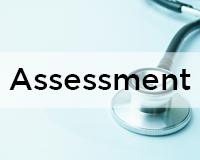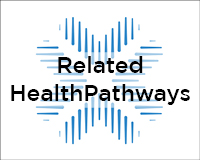
Management tips
- For patients < 21 years of age:
- AAS use by young people should be strongly discouraged because of the high risk of irreversible complications including:
- Stunting of growth
- Early physical maturation
- Joint and bone pain
- Discuss adverse effects that are most likely to have an immediate impact on the young person’s appearance or performance, such as severe acne.
- Explain that testosterone levels are at their highest during adolescence and early adulthood. A young person therefore should have enough natural testosterone to reach a muscular physique.
- Discuss alternative ways to improve performance – nutrition or utilizing a certified strength and conditioning coach.
- AAS use by young people should be strongly discouraged because of the high risk of irreversible complications including:
- For all patients:
- Educate on potential adverse effects of continual use, including infertility, erythrocytosis and dyslipidaemia. Informing a patient about risks may prevent them from starting to use AAS.
- Educate on the risks associated with illicitly produced AAS (e.g. the product may not be sterile or may not contain listed substance, and the amount of AAS may be higher or lower than stated).
- Remind patient that non-prescribed AAS are illegal to possess and use in NSW and that it is illegal to inject others with AAS.
- Provide general advice:
- Discuss realistic goals of training
- Discuss training frequency and diet. If these are suboptimal, patients should be encouraged to consult a certified trainer or sports nutritionist before considering (further) use of non-prescribed AAS.
- Explore patient’s reasoning around use and assess for distorted self-image or muscle dysmorphia (MD).
- MD is a condition that is characterized by body image disturbances, a drive for muscularity and excessive exercising. In some cases this will lead patient to start using AAS.
- The Muscle Dysmorphia Disorder Inventory (MDDI) may possibly be used to screen for MD.
- Offer regular follow up and medical support in achieving the patient’s goals
- For patients < 21 years of age
- AAS use by young people should be strongly discouraged because of the high risk of irreversible complications including:
- Stunting of growth (although rare)
- Early hormonal and emotional maturation
- Joint and bone pain
- Discuss adverse effects that are most likely to have an immediate impact on the young person’s appearance or performance, such as severe acne.
- Explain that testosterone levels are at their highest during adolescence and early adulthood. A young person therefore should have enough natural testosterone to reach a muscular physique.
- AAS use by young people should be strongly discouraged because of the high risk of irreversible complications including:
- Discuss alternative ways to improve performance – nutrition or utilizing a certified strength and conditioning coach.
- Consider referral to suitable support program such as Sydney Drug Education & Counselling Centre (SDECC).
- For all patients
- Ask the patient if they have ever reflected on the possible health consequences of their use, now and in the future and educate on specific risks of adverse effects.
- PIED-using patients often do not tend to consider long-term impacts of AAS use. It is therefore important to discuss aspects such as reduced fertility (which may take 1 to 2 years to normalize after discontinuation), erythrocytosis, and dyslipidaemia (and the impact this has on the heart).
- Make sure to discuss this in an honest, non-judgemental, non-stigmatising, and non-exaggerating way.
- Warn against mixing AAS with other illicit substances, particularly;
- Using stimulants (e.g. cocaine) while using AAS as it can increase feelings of aggression, make it more likely for a person to get out of control, may increase the risk of heart disease, and may cause disturbed sleep patterns which may hinder muscle growth.
- Drinking alcohol and using oral AAS – as this can increase the risk of liver toxicity.
- Other advice that can be provided:
- Discuss training frequency, getting adequate rest, and diet. If these are suboptimal, patients should be encouraged to consult a certified trainer or sports nutritionist before considering further use of non-prescribed AAS.
- If patient is not willing to stop using – recommend reducing amounts or frequency of use.
- Always use sterile injecting equipment and know how to inject; not only important to reduce risk of BBVs but also other injection-related harms (e.g. abscesses). Consider referral to a needle and syringe program for equipment, advice on safer injection practices and information on blood-borne virus (BBV) and other injection related risks (e.g. skin infections).
- The quality and safety of black market AAS is unreliable. Seek help immediately if you experience adverse effects.
- Arrange regular follow up and regular investigations (during and after an AAS cycle) to monitor for emerging adverse effects from AAS use.
- Address specific medical issues (list not exhaustive)[16]:
- Do not prescribe testosterone unless there is a medical indication.
- Treat dyslipidaemia according to relevant guidelines.
- Consider PDE5s for erectile dysfunction.
- Discuss PrEP and safe sex in case of men who have sex with men (MSM)
- Gynaecomastia:
- Consider prescribing Tamoxifen – off-label use and not covered under the Pharmaceutical Benefits Scheme.
- If pharmacological treatment is ineffective, refer to plastic or breast surgeon
- Liver dysfunction, kidney injury, or established cardiovascular disease:
- Encourage immediate discontinuation of non-prescribed AAS use.
- Treat as per relevant guidelines and refer to the relevant specialty (e.g., hepatology, renal medicine, and cardiology).
- Mental health problems:
- Encourage cessation of AAS use.
- If patient meets criteria for a body dysmorphic disorder refer to appropriate mental health specialist such as the Butterfly Foundation.
- Be positive, non-judgemental, non-stigmatising, and support the patient’s capacity to change their non-prescribed AAS use.
- Provide information about potential withdrawal symptoms (see assessment section).
- Make the patient aware that they will need to be able to endure a period of weeks or several months with symptoms of testosterone deficiency (see withdrawal section for common symptoms).
- Patients should be made aware that successful stopping is only possible if the patient can accept a loss in muscle mass and strength.
- Continued encouragement and monitoring of psychiatric and physiological complications are recommended to ensure underlying issues are addressed and to reduce the likelihood that the patient will return to using non-prescribed AAS.
- Address specific medical issues (list not exhaustive)[17]:
- Hypogonadism:
- Refer to the relevant specialty for treatment (e.g., endocrinology, fertility clinic) – A short treatment (<1 year) with clomiphene or Human Chorionic Gonadotropin (HCG) may be useful for men with suppressed gonadotropins and spermatogenesis resulting from AAS use.
- If testosterone levels remain unequivocally low and other causes of hypogonadism have been excluded, testosterone substitution may be considered in the patient who has no desire to have children. It is recommended to do this in consultation with an endocrinologist.
- Gynaecomastia:
- Consider prescribing Tamoxifen – off-label use and not covered under the Pharmaceutical Benefits Scheme.
- If pharmacological treatment is ineffective, refer to plastic or breast surgeon
- Liver dysfunction, kidney injury, or established cardiovascular disease:
- Encourage immediate discontinuation of non-prescribed AAS use.
- Treat as per relevant guidelines and refer to the relevant specialty (e.g., hepatology, renal medicine, and cardiology).
- Mental health problems:
- Encourage cessation of AAS use
- Offer referral to mental health professional as appropriate under a GP Mental Health Treatment Plan
- Hypogonadism:
- Plan follow-up appointments in 2-4 weeks (depending on the issues at hand) to ensure support is in place once the patient has fully stopped using.
- If indicated, discuss referral options (see referral section).
- GPs and other health professionals who treat professional athletes need to have a basic understanding of the anti-doping rules.
- Any GP that prescribes a prohibited substance, even inadvertently, can be subject to an anti-doping rule violation (ADRV).
- Therapeutic Use Exemptions (TUEs) are required for medical indications and treatment. For the elite athlete who has been sanctioned for the unapproved use of AAS or other doping substance, the management is generally straightforward – the athlete must discontinue using the banned substance.
- Sport Integrity Australia offers a course for medical practitioners that covers; (1) the role of athlete support personnel in anti-doping, (2) The World Anti-Doping Code, (3) Anti-Doping Rule Violations, (4) Penalties, (5) How your actions can result in an athlete being sanctioned, (6) Common Treatments for athletes, (7) Medications and Supplements, including Therapeutic Use Exemptions (TUEs). The Medical Practitioner & Athlete Support Personnel Course can be freely accessed HERE.








